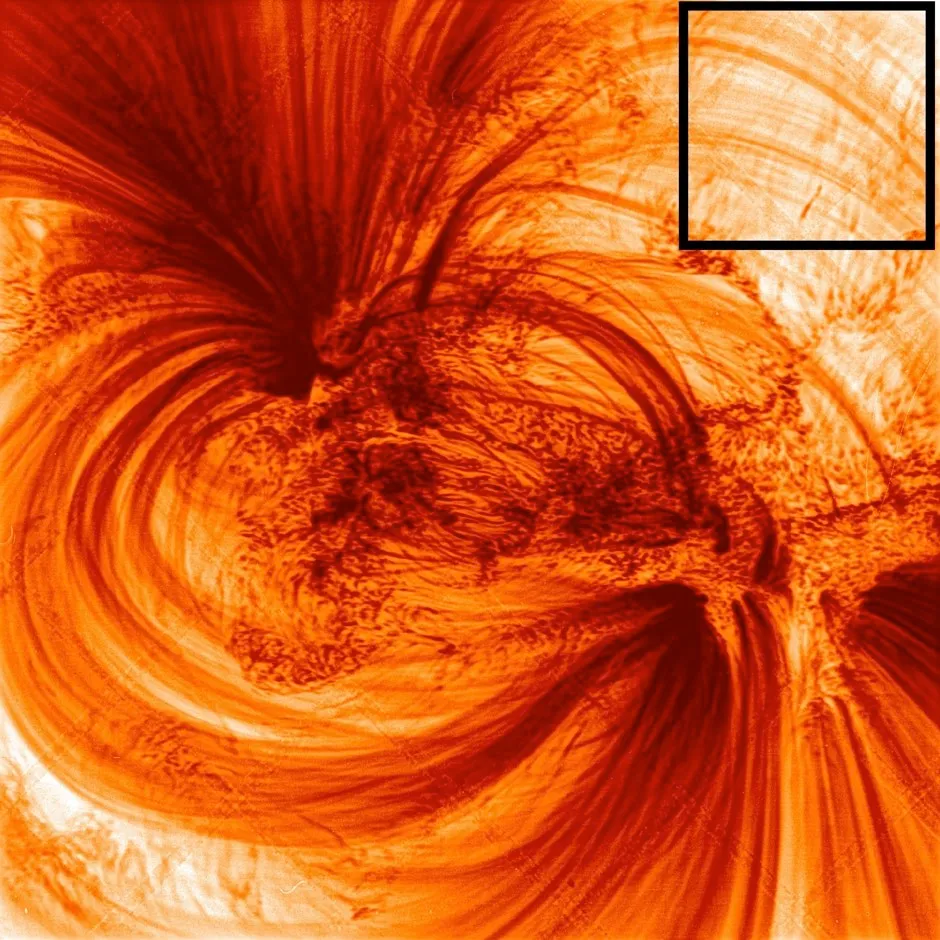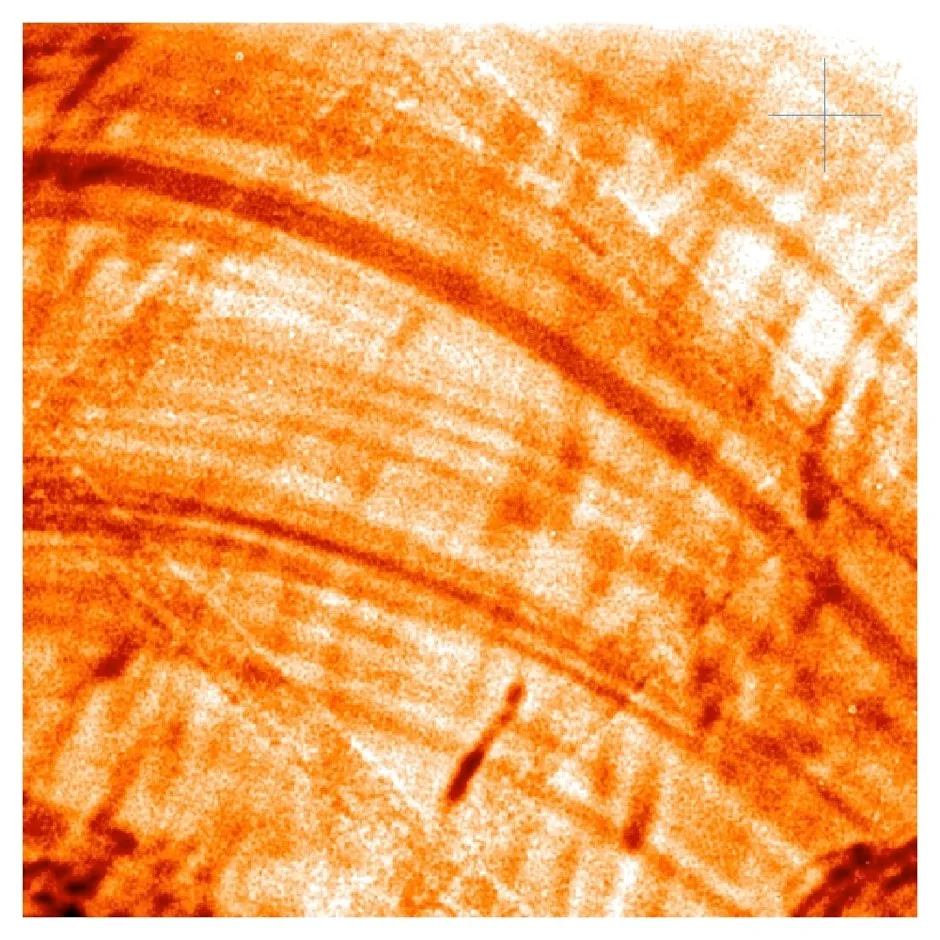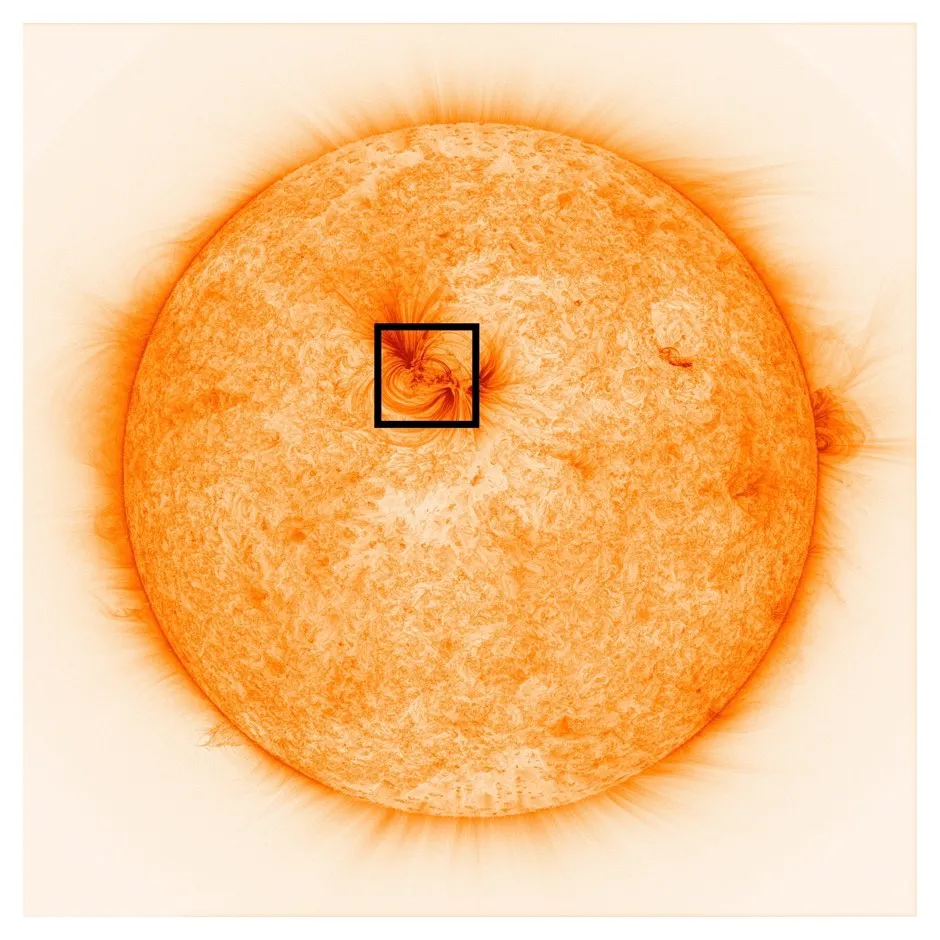British researchers have collaborated with NASA to unveil the highest-ever resolution images of the Sun.
The images, analysed by researchers at the University of Central Lancashire (UCLan) and collaborators from NASA’s Marshall Space Flight Centre, provide astronomers with a better understanding of the Sun’s complex atmosphere.
Until now, certain parts of the Sun’s atmosphere had appeared dark or mostly empty.
However, the new images have revealed it actually contains strands of hot electrified gases that are around 500km (311 miles) in width.

The ultra-sharp images were taken by NASA’s High-Resolution Coronal Imager (Hi-C) telescope, carried into space on a sub-orbital rocket flight.
The telescope can pick out structures in the Sun’s atmosphere as small as 70km in size, or about 0.01 per cent of its total size.
Although what exactly is creating these strands remains unclear, scientific debate will now focus on why they are formed and how their presence helps us understand the eruption of solar flares and solar storms that could affect life on Earth.

Robert Walsh, professor of solar physics at UCLan, said the images provided an “ultra-high definition” glimpse of the Sun for the first time.
“Until now, solar astronomers have effectively been viewing our closest star in ‘standard definition’, whereas the exceptional quality of the data provided by the Hi-C telescope allows us to survey a patch of the Sun in ‘ultra-high definition’ for the first time,” he said.

Tom Williams, a postdoctoral researcher at UCLan who worked on the Hi-C data, said the images would help provide a greater understanding of how the Earth and Sun related to each other.
“This is a fascinating discovery that could better inform our understanding of the flow of energy through the layers of the Sun and eventually down to Earth itself,” he said.
“This is so important if we are to model and predict the behaviour of our life-giving star.”
Read more about the Sun:
- How the Parker Solar Probe will 'touch the Sun'
- A solar exploration: humans' unique relationship with the Sun
- Has any other star come close to our Solar System?
- Solar Orbiter launch: 'mission for a generation' satellite on its way to the Sun
Reader Q&A: Does the Sun make a sound?
Asked by: Simon Price, Aberdeen
The Sun does indeed generate sound, in the form of pressure waves. These are produced by huge pockets of hot gas that rise from deep within the Sun, travelling at hundreds of thousands of miles per hour to eventually break through the solar surface. As a result, the Sun’s atmosphere is seething like a pan of boiling water.
he characteristics of sound waves, such as their speed and amplitude, depend on the material they pass through, so they can be used to study the Sun’s deep interior. Unfortunately, though, the wavelength of these waves is measured in hundreds of miles, and so they’re far outside the range of human hearing.
Read more:

